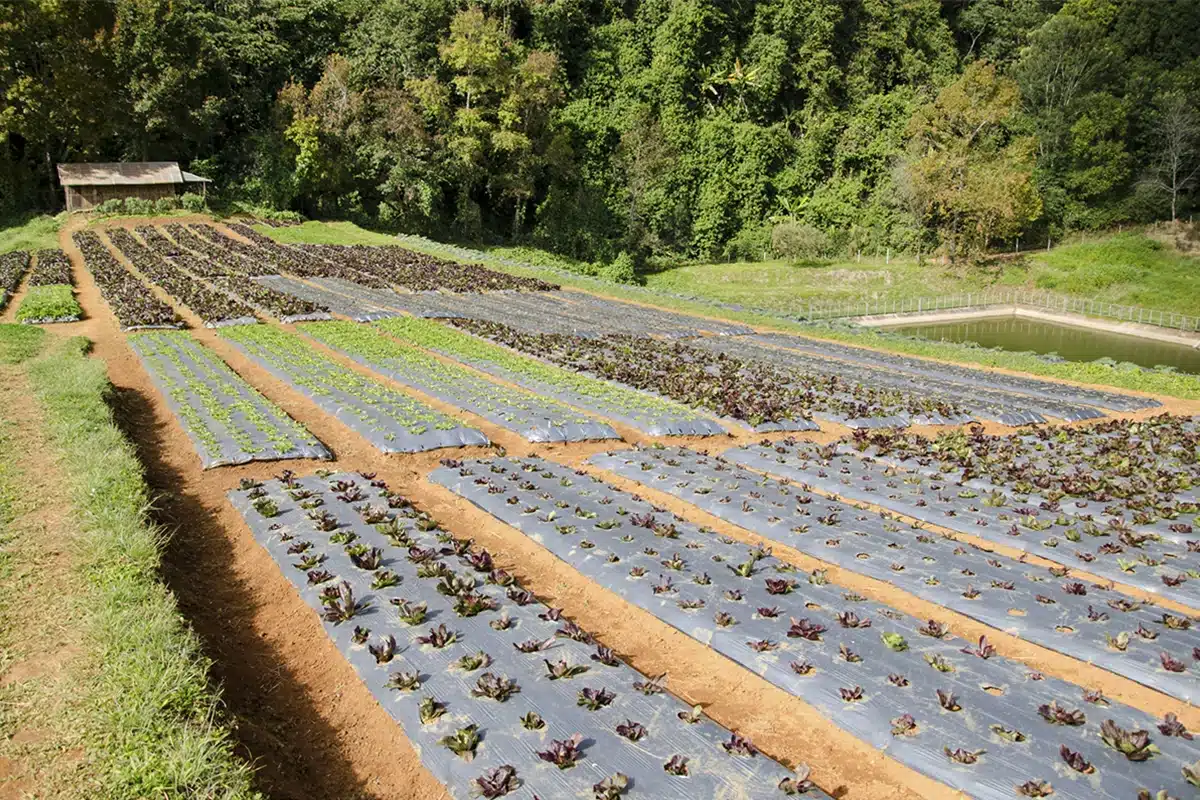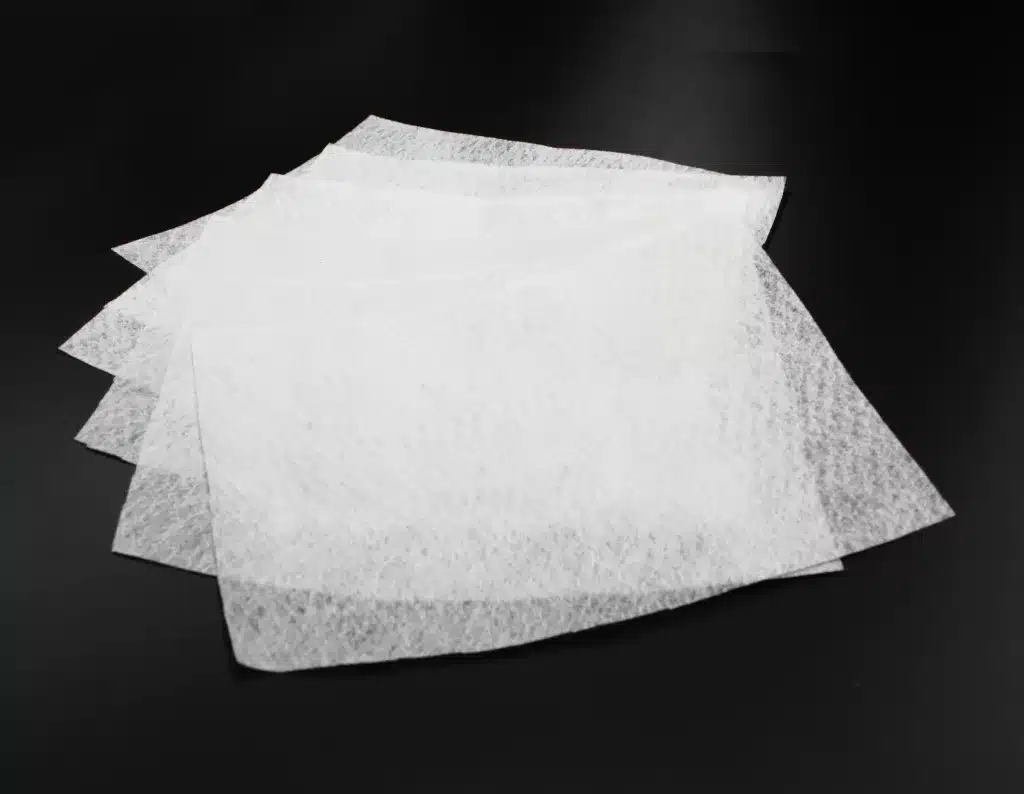+86-159 9860 6917
info@geofantex.com
geofantex@gmail.com
+86-400-8266163-44899
Geotextiles play an essential role in modern civil engineering, helping to reinforce and protect the environment by managing water flow, stabilizing soil, and controlling erosion. These versatile fabrics come in two main types: woven and nonwoven geotextiles. While both serve important functions, their construction and ideal applications differ significantly. This article will explore what makes woven and nonwoven geotextiles unique, when to use woven geotextile fabric, and how they are manufactured for specific purposes.
What is woven geotextile?
Definition and Characteristics: Woven geotextiles are synthetic fabrics made by weaving polypropylene or polyester threads in a grid-like pattern. The weaving process gives these materials high tensile strength and durability, making them well-suited for load-bearing applications. Unlike non-woven geotextiles, which are typically made by bonding fibers together (either mechanically or thermally), woven geotextiles have a more robust structure due to the interlaced threads.
Common Applications: Woven geotextiles are widely used in civil engineering, especially for soil stabilization in road construction, embankments, and retaining walls. They are also used in landscaping for erosion control and are effective in environmental protection projects, like landfill capping, where they help in soil separation and containment.
Advantages of Woven Geotextiles
- Strength and Durability: Woven geotextiles offer high load-bearing capacity and resistance to puncture, making them ideal for reinforcing and stabilizing soil under heavy loads.
- Drainage Capabilities: They enable water filtration while preventing soil particles from passing through, which helps manage water buildup.
- Soil Stabilization: By distributing loads more evenly across a surface, they prevent soil shifting and erosion.
Drawbacks or Limitations: Despite their strengths, woven geotextiles have certain limitations. They are less effective in applications requiring high permeability or water flow, such as drainage fields, where non-woven geotextiles may be more suitable. Additionally, woven geotextiles are generally more rigid, which can limit their adaptability in some applications.
Real-World Examples
- Road Construction: Woven geotextiles have been successfully used in road-building projects to extend the lifespan of roads built on soft soils by improving load distribution and reducing deformation.
- Landfill Liners: In landfill projects, woven geotextiles help in containment and stability by separating various soil layers and preventing contamination.

What is nonwoven geotextile?
Nonwoven geotextile, in contrast, is manufactured using individual threads of fabric that have been tightly wound together and then bonded using heat, chemical, or mechanical methods rather than being woven. This process results in a fabric with a felt-like texture, often used for filtration and drainage applications. Nonwoven geotextiles are highly permeable, allowing water to pass through while preventing soil from migrating. They are commonly used in erosion control, drainage systems, and underlayment for paving stones or driveways.

How are woven geotextiles manufactured using individual threads of fabric that have been tightly wound together?
Definition: Nonwoven geotextile is a synthetic permeable textile material commonly used in construction and environmental projects. Unlike woven textiles that have an interlaced pattern, nonwoven geotextiles are produced by bonding fibers together through chemical, thermal, or mechanical processes. This bonding forms a web-like structure that provides strength and allows water and air to pass through, making it suitable for various applications.
Composition and Properties
Composition
Typically, nonwoven geotextiles are made from synthetic polymers like polypropylene or polyester. These materials are chosen for their durability, resistance to degradation, and adaptability to different environments. Depending on the specific application, the fibers may be short or continuous and can be manipulated to control thickness and porosity.
Key Properties
- Permeability: Allows water to pass through while filtering particles, making it ideal for drainage and filtration.
- Flexibility and Conformability: Easily adapts to uneven surfaces, unlike rigid woven alternatives.
- Strength: Offers good tensile strength and puncture resistance, important for applications involving soil or weight pressure.
- Chemical and UV Resistance: Designed to withstand exposure to chemicals and UV light without degrading quickly.
Common Applications
- Drainage Systems: Acts as a filter layer in drainage applications to prevent soil and sediment from clogging pipes and channels.
- Erosion Control: Placed under rock or soil to stabilize slopes and control erosion in areas like riverbanks, hillsides, and shorelines.
- Separation and Stabilization: Prevents mixing of different soil layers while providing support for roads, pavements, and foundations.
- Environmental Protection: Used in landfills and waste containment to prevent leachate movement into surrounding soil and groundwater.
Advantages Over Woven Geotextiles
- Increased Permeability: Nonwoven geotextiles typically offer higher permeability than woven ones, which makes them better suited for drainage and filtration.
- Cost-Effective: They are generally less expensive and easier to install, reducing overall project costs.
- Flexibility: Nonwoven geotextiles can more easily conform to irregular surfaces, making them a preferred choice in applications with variable soil or substrate conditions.
Standards and Classifications
Industry standards for nonwoven geotextiles are typically governed by organizations like ASTM (American Society for Testing and Materials) and ISO (International Organization for Standardization). These standards ensure that the materials meet specific performance criteria in terms of tensile strength, permeability, puncture resistance, and environmental durability.
When to use woven geotextile fabric?
Woven geotextile fabric should be used when the primary concern is soil stabilization and reinforcement, especially in situations where high strength is required. It is often employed to stabilize soil, control erosion, reinforce roads, and even in drainage management. In road construction, it helps prevent the mixing of different soil layers and improves the long-term performance of the road. Woven geotextiles are also useful in projects involving heavy loads, such as under railways, embankments, and retaining structures, due to their ability to bear substantial pressure without stretching or tearing.
Woven and nonwoven geotextiles serve distinct purposes in civil engineering and construction. Woven geotextiles, made from tightly wound threads, offer high tensile strength for soil stabilization and load-bearing applications. Nonwoven geotextiles, made through a bonding process, provide excellent filtration and drainage capabilities. Understanding the differences between these geotextile types is crucial for choosing the right material for your project, ensuring optimal performance and longevity.



Get Free Sample
We’ll respond as soon as possible(within 12 hours)






















